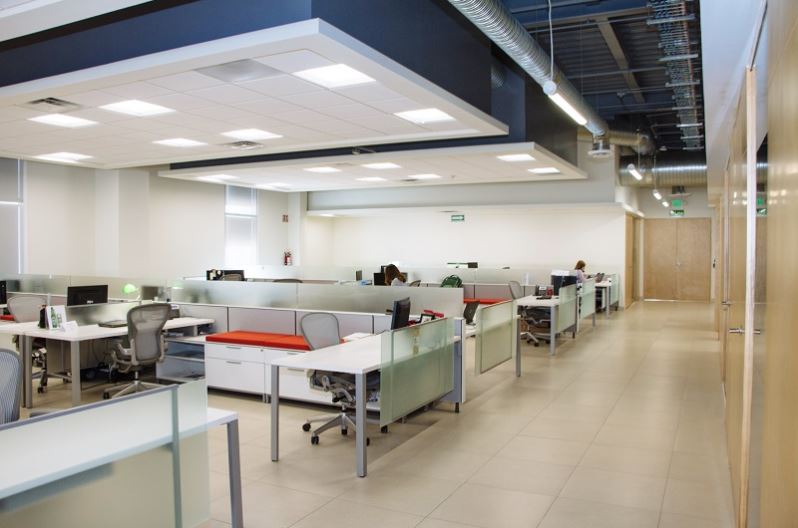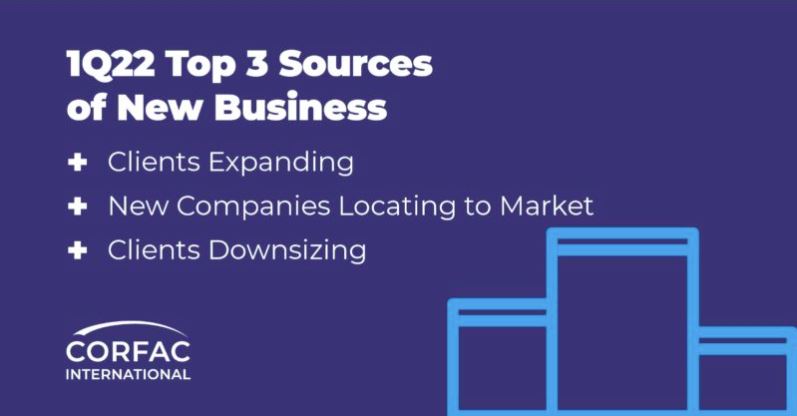It’s clear when looking at the quieter streets in downtowns across the Midwest that many office workers have still not returned to their cubicles and conference rooms. It’s equally clear that no one knows when workers will once again fill these office buildings.
But what about those working in the commercial real estate industry? Are they returning to the office? And do they want to?
That’s what Keller Augusta, a search and advisory firm focused on commercial real estate, wanted to find out. The firm recently conducted its second Workplace Reboot Survey, charting the opinions of 600 CRE employees and employers on whether brokers, developers and other CRE pros are returning to the office, if now is the right time for this and what a return to the office will look like.
What did this survey find? First, those working in commercial real estate are largely like most employees: They’re not eager to return to the office full time. Keller Augusta found that nearly half of all surveyed employees wanted to work one to days a week in the office.
The conflict? Only 20% of the employers surveyed by Keller Augusta mirror that hybrid schedule.
Kaitlin Kincaid, senior managing director with Keller Augusta, said that these results aren’t overly surprising. The COVID-19 pandemic changed the way many people think about work, and that includes those working in commercial real estate.
“Most commercial real estate salespeople and client-facing people were not sitting at a desk all day long before COVID,” Kincaid said. “But that doesn’t mean that commercial real estate companies didn’t face challenges with work-from-home. How do you manage a building from home? How do you build a building from home? How do you interact with tenants from home? A big part of the real estate industry is at the property level. When COVID hit, it became challenging when only emergency personnel were allowed to go properties.”
Those CRE workers who were allowed to do their jobs remotely found that they liked the flexibility of working from home, Kincaid said. They no longer had to make long commutes each day. They could spend more time with their families. They had more time to exercise.
This has forced many CRE employers to search for ways to provide at least some of that flexibility now, even as the United States has, hopefully, worked through the worst days of the pandemic. This might mean offering all CRE employees the option to work on a hybrid schedule, even those working in property management.
And employers who don’t give their workers some say in how many days a week they must come into the office? They might struggle to find and retain employees.
“A company that isn’t doing this could lose strong employees to a different opportunity,” Kincaid said. “The flexibility and hybrid schedules are a major retention tool for companies today. Employees are prioritizing flexibility over compensation in many cases. Employers have had to respond to that.”
Are employers in the commercial real estate world responding to this challenge? Kincaid said that they are. She said that most CRE companies are operating on a hybrid model in which employees work part of the time from home and other days in the office.
“The companies that quickly said that we are in the real estate business and we want people back in the office five days a week are losing people at such a high rate that they are backpedaling and are now working on a hybrid model,” Kincaid said.
But how permanent is this change? That’s a tougher question to answer, Kincaid said.
Kincaid said that she isn’t sure that hybrid work models are here to stay in the commercial real estate business. Many companies might be offering this flexibility on a temporary basis to keep their most talented workers. But the key word here is “temporary.”
“Companies might soon start to say, ‘If you can go to restaurants and bars and go on vacation, you can come to the office,’” Kincaid said. “Companies accommodated people who didn’t want to go into the office before we had vaccinations. Then companies kept this flexibility because they knew if they didn’t offer it, they’d lose workers. But when we continue to move past COVID will this working arrangement be here to stay? I don’t know.”
In the past, the only employees who asked for remote work were generally people with childcare responsibilities, mostly women, Kincaid said. That is no longer the case. Today, many workers are seeking the flexibility to work from home at least part of the time, with some saying they’ll never come back to the office five days a week.
This doesn’t mean that commercial real estate offices are empty. Kincaid said that few commercial real estate companies have not brought their employees back to the office in some capacity.
This is important, Kincaid said. Employers want their workers in the office at least part of the time as a way to foster collaboration and brainstorming. When everyone is working from home, that collaboration largely disappears.
Even a hybrid work schedule limits collaboration to some extent, Kincaid said. And this is one of the big concerns that CRE companies have.
“If everyone is in the office, that works well. If everyone is at home, that can work, too. But if some employees are at home and others are at work, that results in missed opportunities to have everyone collaborate at the same time,” Kincaid said. “The employees at home miss out on that moment when they are walking by someone’s desk and that person wants to sit and talk about a project. That is the part that is missing. If that one person is not in that day, that person might miss out on that conversation.”
Employers are concerned, too, about mentorship and training. It’s more difficult to train younger workers when they aren’t in the office.
Those who entered the workforce during COVID have borne the brunt of this, Kincaid said.
“They didn’t have the same kind of training,” Kincaid said. “Their internships were canceled. Their first year on the job they worked form their parents’ basement. They are lighter across the board on overall professional experience. They lack some of that mentorship that is so important.”
What are CRE employers doing to bring their workers back to the office, at least on a hybrid basis? Kincaid said that many companies are improving the work environment. This might mean something as simple as providing regular lunches and snacks onsite. Others are paying for their employees’ parking, while still others are bringing wellness services – everything from onsite fitness classes to mental health services – to their offices.
Some CRE firms are holding more social events to encourage their workers to leave their homes and mingle with their fellow employees. This might mean company lunches and off-site activities. Others are organizing community service events to get employees interacting with each other again.
“It’s about bringing people together again,” Kincaid said. “They are trying to recreate those relationships that employees had with their colleagues. They want their workers to say, ‘I enjoyed being with these people today. I want to go back.’”
The keys to retaining the top CRE workers, though, remain the same today as they were before the pandemic, Kincaid. It’s about offering not only solid compensation but opportunity, too.
“Employees want to feel as if they have an opportunity to advance,” Kincaid said. “It’s about creating a career path that employees can aspire to. Employees that have a desire to do more, will be happier at a company that offers them more professional opportunities.”









